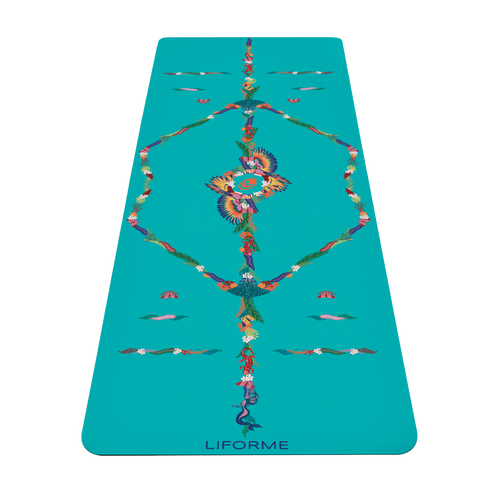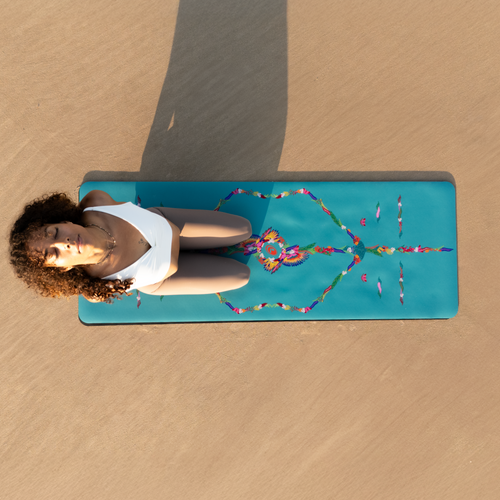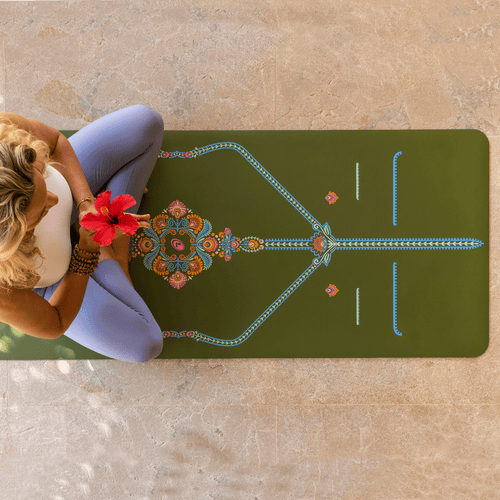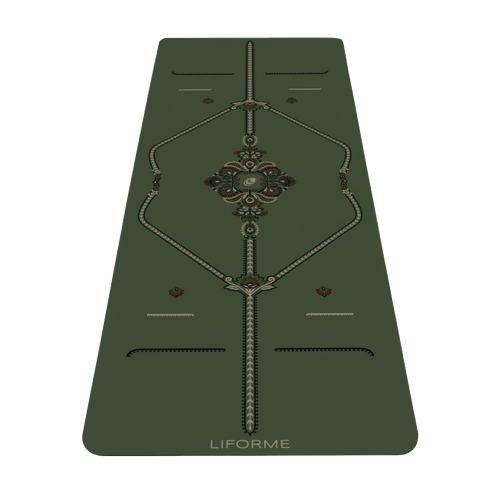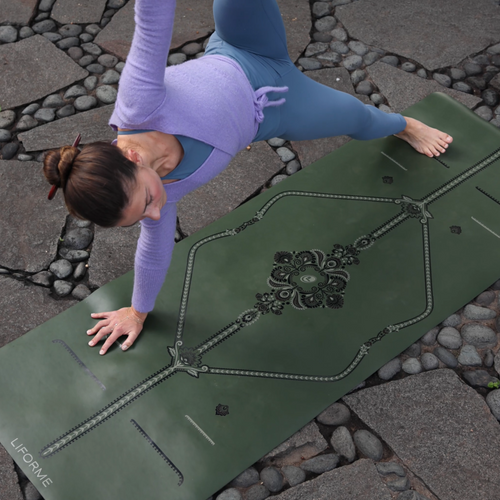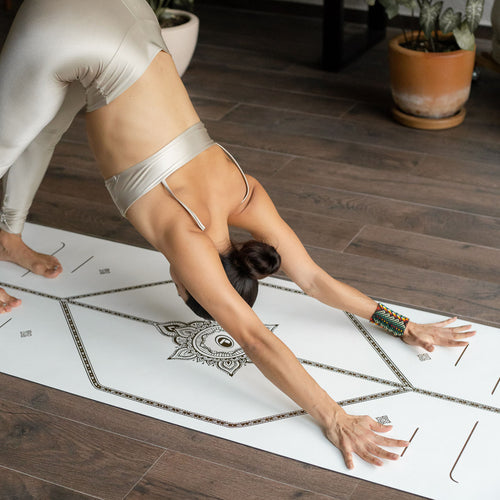Discover the History that led to Liforme’s Game-Changing Yoga Mats
What’s in a Yoga Mat?
Does it really matter what kind of mat you use for yoga? A mat can only do so much to support your yoga practice and only your physical practice at that. It will not guide you like a good teacher, even if it does have rather clever alignment markers (wink) on its surface, right? And no mat is going to help you observe any of the other limbs of yoga, is it?
But think of all the hours you spend on that rectangle of rubber (or, perish the thought, PVC). And how, when it comes to asana practice, a steady, comfortable base is actually a very useful tool in fostering a steady, comfortable practice.
There is also a valid argument that the products we choose to buy should reflect, as much as possible, yoga’s ethical values. That it’s our collective responsibility to make sure that the purchases we make for the sake of yoga are, in addition to being attractive and functional, not harmful to living beings or the planet.
So, it turns out that the kind of mat you use for yoga actually is quite important. All mats are not created equal, as you will see when you take a look at the history of how yoga mats developed over time…
The History of the Yoga Mat animated video arose from our desire to communicate just how special and revolutionary Liforme’s mats really are. During our five years of research (and boy what a journey, and a labour, of love, that was!), we looked at the yoga mats that had been available to date and determined that to achieve a better practice experience, the mat had to be rethought from the ground up. We worked with materials engineers and scientists to fulfil a brief with three main priorities:
a mat that offers grip and traction,
provides the right balance between soft-cushioning and firm-stability,
and is truly eco-friendly.

The Difference You Can’t See
We know that yogis can feel the difference in our mat’s surface, which stays grippy even during a sweat-soaked vinyasa session. That they can appreciate that our two-layered construction offers the ideal balance between firm stability and soft cushioning.
But we felt that the third key aspect of our mat, namely our commitment to using more sustainable, non-toxic, and truly environmentally-conscious materials (during the manufacture, the usage life, and, ultimately, the disposal, of the mat) without sacrificing performance, was a bit harder to see. We hope that by explaining the way that yoga mats evolved, it becomes clearer just how much of an improvement Liforme’s engineering is over all the other mats that have come before.
Know Your Facts
The reaction to our visual tour through yoga mat history has been amazing and we’re so pleased that our message is coming through. A lot of people have commented that they didn’t know how harmful PVC is and have even expressed shock that this material was used to make yoga mats in the past.
So we’d just like to point out that, much as we’d like to see the era of PVC mats over and done with, the fact is that PVC remains the most prevalent material for budget (and even some high-end) yoga mats. If you don’t know what your mat is made of, chances are it’s PVC. It takes a bit of effort to choose a non-PVC mat, but now that you are aware of the difference, we hope you’ll agree that it’s worth it.

Science Has Our Back
Because we don’t want you to just take our word for it (as honest as we are!) we went to the lengths of commissioning an in-depth research study into the different materials from which yoga mats are made to examine and report on the real issues. The investigation was conducted by a leading polymer expert at Imperial College London, a global top-ten university with a world-class reputation for Science.
The findings, which focus mainly on the difference between PVC and the natural rubber and polyurethane materials we use at Liforme, are available for all to download and read in full on the dedicated webpage we created for ‘The History of the Yoga Mat’. We’ve also included there a handy timeline summary of how yoga mats evolved since the beginning.
We Built a Better Mat
In our humble opinion, the mat we have made is a game-changer, and that’s before we added the final elevating touch: our unique and original alignment guide on the surface. As is often the case when you really, actually, do the hard work required to innovate, along the way we discovered a few additional things that were worth adding to the mix.
We decided to make our mats a little longer and wider than the standard so that they work for all kinds of bodies. And we include a complimentary bag with each mat to make it easier for yogis to protect and carry their precious practice companions.
We believe that the more you know, the better equipped you are to make the important decisions that reflect the values of the yoga practice we all love so much. We hope that once you watch The History of the Yoga Mat, you will better understand just how revolutionary Liforme mats are.
 Love,
Love,
Liv x












